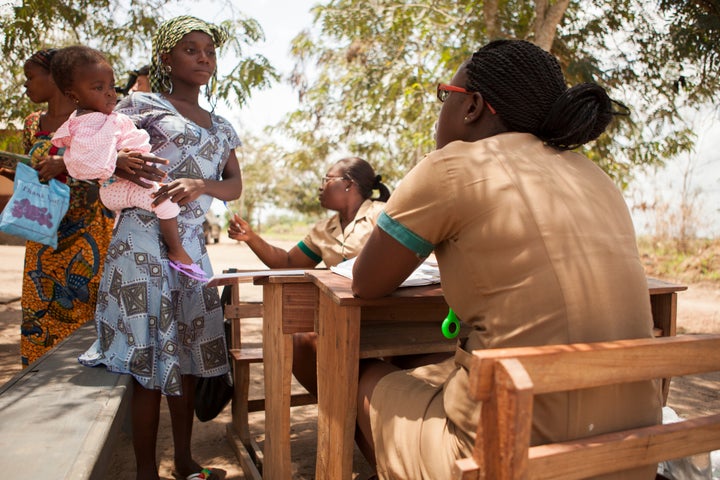
For many of my early professional years, I was convinced that immunization was global health’s most gender-equitable intervention. As a student and young professional, I was taught that expanding access to life-saving vaccines hinged solely upon overcoming structural barriers such as cost, education and geography, and that girl and boy babies were equally vaccinated (or unvaccinated). Simply put, I learned that gender inequality was a problem for other life-saving interventions but not for vaccines.
A 2010 study conducted by WHO and the Swiss Tropical Public Health Institute for Gavi, the Vaccine Alliance, reinforced this view. It showed that no major difference in coverage existed between boys and girls globally, and only a very small number of countries showed any differences at all. It wasn’t until 2014, when my colleague Sarah Hendriks joined the Bill & Melinda Gates Foundation, that my views started to change. Sarah shared her gender expertise, dove deep into the data and helped me understand how gender dynamics affect immunization coverage in more complicated ways than they appear on the surface. With her mentorship, I began to see the role of gender in determining immunization coverage in new ways.
First of all, she shared the troubling fact that specific data on women and girls often go uncollected in developing countries and, when they are, are outdated, and imprecise collection methods are often used. These data “blindspots” not only undervalue the potential of women and girls, they make it harder to evaluate policies intended to improve their welfare in society.
Second, she showed me that with regard to immunization data, I was focusing too much on the babies and not enough on mothers. It turns out that a mother’s level of formal education is a pretty significant driver of whether or not her child gets vaccinated. For example, a 2010 study in Eastern Uganda concluded that infants whose mothers had a secondary education were at least 50 percent less likely to miss scheduled vaccinations compared to those whose mothers only had primary education, and that strategies for childhood vaccinations should specifically target women with low formal education. A 2012 study conducted in India showed a positive relationship between maternal education and childhood immunization, even when other socio-demographic characteristics were controlled for. And a 2015 cross-sectional study from Kenya showed that women with at least a primary education were between two and nine times more likely to vaccinate their children than those without.
This evidence reflects the fact that better educated women tend to have more autonomy, are more empowered to access health services for themselves and their children, and are more likely to seek out knowledge about how to keep their children healthy.
These revelations inspired me for two reasons. First, they showed how investment in maternal education can increase immunization coverage in children. And second, they underscored the importance of pursuing programmatic interventions that can improve both immunization and gender equity. Because we know that educated and empowered women can transform societies.
Given that today is International Day of the Girl Child, it is a fitting time to pull back the curtain on the complex role of gender in immunization, and sound the call for closing the gender data gap. For my colleagues who aren’t convinced that gender impacts global immunization, I encourage you to find your own Sarah Hendriks, dig deeper into the data and look more closely for the ways in which gender inequalities impact our field. We now have the opportunity to increase immunization coverage in smarter and more gender equitable ways, such as working to ensure that all mothers, everywhere, receive a basic education. Doing so will not only help us to empower women in the long-term—it will help protect our girls and boys from vaccine-preventable disease, foster stronger communities, and power the engine that creates greater opportunity for all to prosper.